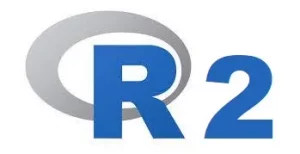Hantera Cookies
För att du ska få en så bra upplevelse som möjligt på webbplatsen använder vi cookies som innebär att vi lagrar och/eller får tillgång till viss information på din enhet så som mobil eller dator.
Learn about planning your work, choosing the appropriate statistical analysis method, and interpreting and validating the results. You will also receive valuable tips on avoiding common pitfalls, illustrated with typical real-life cases.
You will learn to handle R and the statistical models necessary to work independently on your own analyses. Get started with using R this spring’s with our online courses!

October 22–23, on Zoom
Introduction to R
Handling data
Data visualisation
Descriptive statistics
Introduction to modern statistics
Statistical concepts
Classical statistical methods
Modern statistical methods

November 5–6, on Zoom
Linear regression & ANOVA
Linear regression
ANOVA
Advanced regression models
Generalised linear models
Survival analysis
Mixed models

November 26–27, on Zoom
Visualisation & data exploration
Visualisation
Dimension reduction with PCA
Cluster analysis & structural equation models
Cluster analysis
Factor analysis
SEM
Mediation analysis
Course leader

Highly esteemed educator with a broad statistical expertise
Måns Thulin works as a consultant and lecturer in statistics, machine learning, and artificial intelligence. He has twelve years of experience in teaching at institutions such as Uppsala University and the University of Edinburgh and is the author of the popular textbook Modern Statistics with R. Måns’s pedagogical goal is to help all course participants understand the methods of statistics – statistics should feel logical and not like black magic.

About R
Today, R is a very popular program for statistical analysis with over two million active users. One reason for this is that program development is constantly advancing through user-created packages that are both easy to install and use.
Since R is open-source software, you can also use code that others have developed in your own projects without paying license fees. The fact that R is available at no cost, as free software, has likely also been a driving factor behind its increasing popularity.